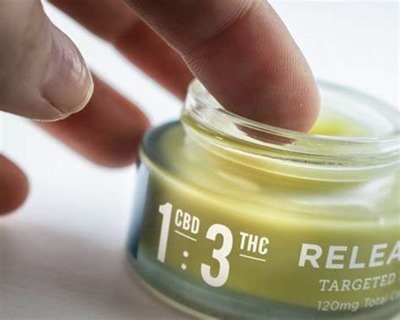Cannabidiol is available to customers in many different forms. They will choose the product depending on personal preferences and whether they want to use it as a treatment or prevention. Since all these products are plant-based, they are safe to use and can be used interchangeably.
More on the types of hemp products, read here:
https://ministryofhemp.com/blog/different-types-cbd-oil/
Hemp products applied to the skin are especially appreciated in people who suffer from skin issues or some inflammatory diseases that cause pain and tension. In these situations, you can opt for balms, lotions, salves, or creams. All these have the same purpose, and there are slight differences in texture.
Salves have the beeswax basis, in which cannabidiol is injected. That allows them a long shelf life, but like any natural compound, cannabidiol in them can deteriorate over time. So, if you are prone to stockpiling, you need to know some basic rules about storing hemp topicals.
Avoid Direct Exposure to Heat and Light
Due to their texture and composition, most salves are heat sensitive. Since they don’t contain artificial preservatives and additives, but only natural beeswax and carrier oils, these topicals should not be exposed to direct heat and light. The wax can melt, which will change the texture of the salve.
But the bigger problem is that high temperatures can destroy cannabidiol molecules. They can break, and their healing properties are lost. Also, the oils contained in the salves can spoil due to the effects of heat.
As for direct exposure to light, this means sunlight, because it heats. Artificial light doesn’t affect the texture and composition of CBD topicals. But just in case, keep them in the dark, dry, and cold place.
CBD salves are mostly packed in glass or plastic jars or containers that are not transparent. It allows them to keep their texture and healing properties if stored properly. If you have purchased products in a see-through package or have made homemade topicals that you have packed in glass jars, you can wrap them in foil and prevent light and heat penetration. If interested in DIY CBD topicals, see this page.
No Need for Freezing
There are many dilemmas about whether products with cannabidiol should be stored in the fridge or not. As for CBD salve, it should be kept similarly as cosmetics of the same texture. Freezing is not necessary, except if you live in the area with a hot climate.
Due to the wax base, CBD salve has a thick, creamy consistency at room temperature. If you want to keep you cool when you apply it on your skin, you can put this product in the fridge overnight. But there is no need to freeze and always keep it at low temperatures.
Keep CBD Salve in Original Packaging
Oxygen is another ‘enemy’ of cannabidiol. Research shows that this element can break down CBD molecules the fastest. It’s impossible to preserve CBD salve from the effects of oxygen ultimately (because it is all around us, right?). So ensure that the content in the original packaging is well sealed.
Suppose you bought hemp products from reputable manufacturers. In that case, the packages are most likely well protected, so the air, light, and heat can’t enter them. But if you decide to make this topical yourself, store it in jars or containers that are well sealed.
Keep CBD Products Away from Kids and Pets
The same rule applies to hemp products as to all medications – you should not leave any of these out of kids’ and pets’ reach. Although CBD salve is safe for use in children and animals, and can even be applied to them, keep this product away.
Small packages with a creamy content, like those from Cheef Botanicals, look tempting and often smell nice, so kids may think that’s something to eat. Nothing wrong can happen as beeswax is edible, but the taste is not pleasant. Also, cannabidiol can upset little stomachs.
One pack of CBD salve can last a long time, even if you use it every day. This product is affordable and can be easily procured, so there is no need to stockpile for months. Once opened, use and store CBD salve according to the manufacturer’s instructions.


